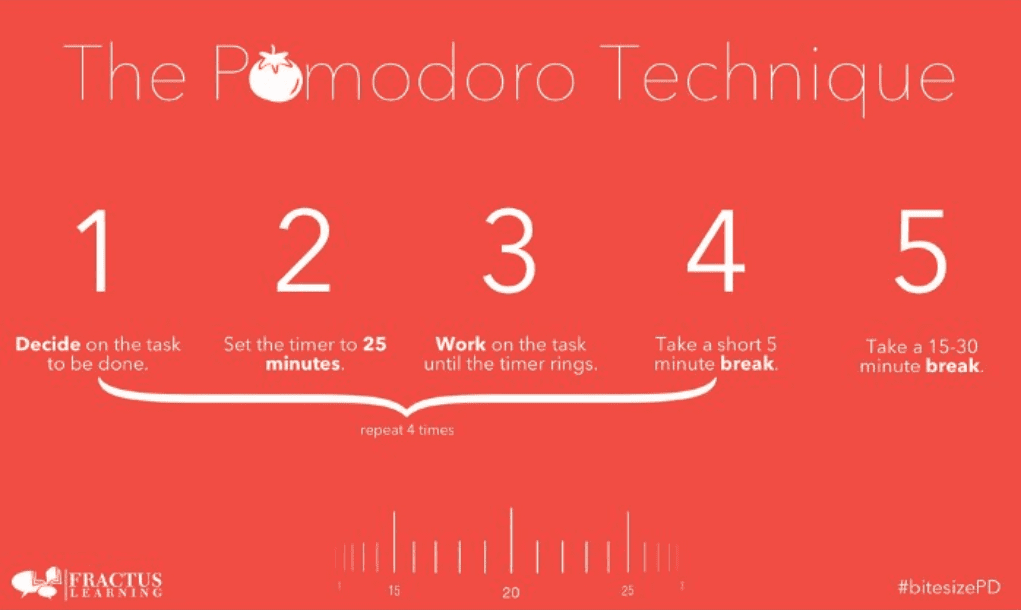We’ve all procrastinated before. In a world where multi-tasking is the norm, faster is better, and now is already too late, it’s easy to fall victim to poor time management. How do we normally deal with approaching deadlines? We try to power-drive through whatever task we have at hand. No breaks, no distractions, no shifts in focus.
To Francisco Cirillo, that’s really counterintuitive.
Here’s the scoop on his Pomodoro Technique, a time management strategy designed to take on any task in 25 minutes without draining your energy.

Photo Credit: iStock
The thought behind the Pomodoro Technique is simple.
Time creates pressure…
…pressure leads to stress…
…and stress reduces your ability to work.
It’s the law of diminishing returns. Since the 1980’s, more than 2 million people have used this technique to keep themselves on track when working under a time crunch.
The idea is to work with time, not against it.

Photo Credit: iStock
Here’s how to do it….
- First, work on your task for 25 minutes straight.
- Then, as soon as you hit the 25-minute mark, take a break. Five minutes should do the trick.
- After your break, if you didn’t finish your task yet, work again for another 25 minutes.
- Repeat this pattern four times, taking a much longer 20 to 30 minute break after the fourth repetition.
- It’s game designed to get us working around and with time instead of fighting to beat the clock.
Here’s a handy graph that encapsulates the steps…

Image Credit: Medium
On our relationship with time, Cirillo remarks:
“Time is an enemy. We have to run; we have to protect ourselves. This leads us to really bad behaviors.
What is the problem with time? It’s that we don’t know how to deal with the human limit.”
The Pomodoro Technique is specifically designed to recognize our limits. It addresses our boundaries instead of bulldozing through them.
This new form of self-care in the workplace is all about taking breaks when you need them and letting the thoughts flow. It’s pretty close to meditation, in that way. In a world of smart phones and social media, it’s easy to fall down a rabbit hole of distractions.
It’s important that we listen to our brain when it’s telling us we need to rest, otherwise we might be tiring ourselves out before we can even be productive.

Photo Credit: Pexels
At the end of the day, we all want to be able to do our best work. The key to harnessing our brainpower is to let go of control, not seize it.
I’m definitely going to try this the next time I need to meet an article deadline!
What do you think of the Pomodoro Technique? Let us know in the comments below!






